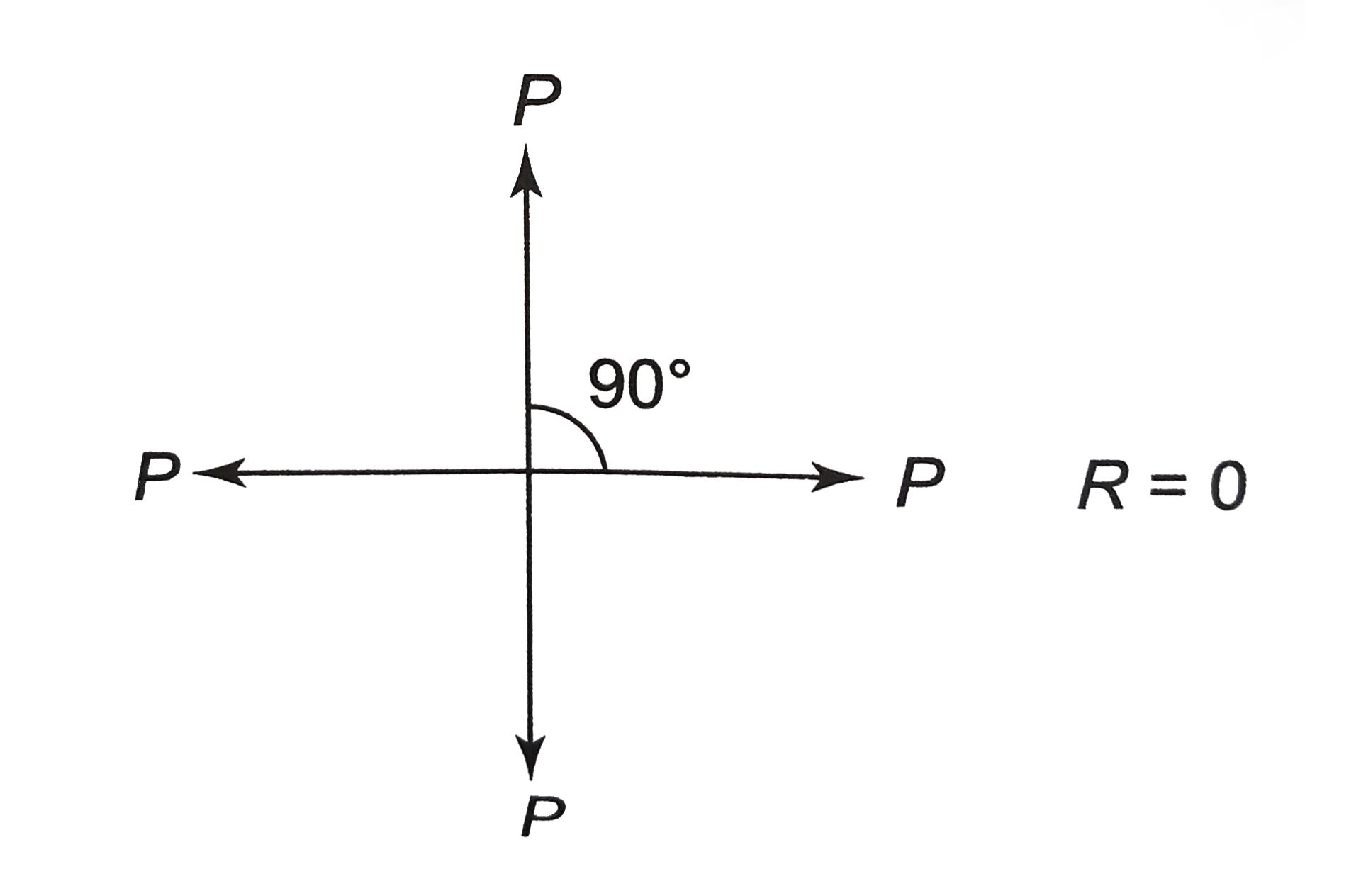If N-vectors of equal magnitude are acting through a point and angle between the adjacent vectors is 2π/N , find the resultant.
The resultant is zero.
(a) If N=2 , the angle between vectors =2π2=π=180∘
(b) If N=4 , the angle between adjacent vectors =2π4=π2=90∘
( c) If N=3 , the angle between adjacent vectors =2π3=120∘
OR
Adding these vectors by the polygon law , given vectors form a closed polygon , hence their vector sum is zero.



Topper's Solved these Questions
Similar Questions
Two vectors of equal magnitude are acting through a point. The magnitude of resultant is equal to the magnitude of either vectoe. Find the angle between the vectors.
View SolutionTwo vectors having equal magnitudes A make an angle θ with each other. Find the magnitude and direction of the resultant.
View Solution
Knowledge Check
Two vectors of magnitude 4 and 6 are acting through a point. If the magnitude of the resultant is R
A4<R<6B4<R<10C2≤R≤10D2≥R≥10If two forces of equal magnitude 4 units acting at a point and the angle between them is 120∘, then find the magnitude of direction of the sum of the two vectors
A4,θ=tan−10(1.73)B4,θ=tan−1(0.73)C2,θ=tan−1(1.73)D6,θ−1(0.73)→A and →B are two vectors of equal magnitude and θ is the angle between them.The angle between →A or →B with their resultant is
Aθ4Bθ2C2θD0
Two vectors having equal magnitudes A make an angle θ with eahc other. Find the magnitude and direction of the resultant.
View SolutionTwo vectors, equal in magnitude, have their resultant equal in magnitude of the either. The angle between the two vectors is _____.
View SolutionThree vector each of magnitude A are acting at a point such that angle between any two consecuitve vectors in same plane is 60∘ The magniude of their resultant is
View SolutionResultant of two vector of equal magnitude A is
View SolutionA vector of magnitude a is turned through angle θ . The magnitude of change in the vector is given by:
View Solution
